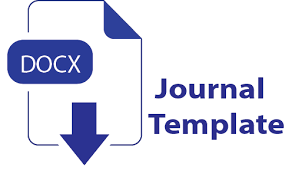Author Guidelines
An-Nahdah Al-’Arabiyah published two times a year since 2021, is peer-reviewed journal, and specializes in Arabic, Linguistic, Literature, Arabic History, Arabic Culture, and Philology. The aim is to provide readers with a better understanding of Arabic Language and Literature history and present developments through the publication of articles, research reports, and book reviews.
The journal invites scholars and experts working in all disciplines in the Arabic Language and Literature. Articles should be original, research-based, unpublished and not under review for possible publication in other journals. All submitted papers are subject to review of the editors, editorial board, and double blind reviewers. Submissions that violate our guidelines on formatting or length will be rejected without review.
Articles should be written in English or Arabic
The article that will be submitted in this journal should contain:
- Scientific Characteristically, a review of social issues, politics, law, religion and culture, original ideas, a summary of the results of the research/survey, and a book review that is considered could contribute to society and science;
- Ensure that the manuscript submitted is a manuscript that has never been published in any publication or no publication is being requested or considered by other media by attaching the Author's Statement.
- The manuscript should be written in English or Arabic between 3000-7000 words including text, all tables, figures, notes, references, and appendices intended for publication. All submissions must include abstract and keywords by using a template An-Nahdah. The manuscript uses font Book Antiqua size 10 and with 1.2 spacing. Arabic manuscript uses font sakkal majalla size with 1 spacing
- Each manuscript is written in a sequence, consisting of the title, author's name, abstract, keywords, and content (Introduction, Method, Research Finding, Discussion, Conclusion, and Bibliography;
- The title should be concise and to the point, allowed to include a subtitle with a maximum total consisting of 14 syllables;
- Make the author's name, institutional affiliation, and email address under the title of the article, and Authors do not need to include an academic degree;
- Abstract: A concise and factual abstract is required (maximum length of 200 words). The abstract should state briefly the purpose of the research, the principal results, and major conclusions. An abstract is often presented separately from the article, so it must be able to stand alone. References should, therefore, be avoided, but if essential, they must be cited in full, without reference to the reference list. Non-standard or uncommon abbreviations should be avoided, but if essential they must be defined at their first mention in the abstract itself;
- Keywords: Immediately after the abstract, provide a maximum of five keywords, avoiding general and plural terms and multiple concepts (avoid, for example, 'and', 'of'). Be sparing with abbreviations: only abbreviations firmly established in the field may be eligible. These keywords will be used for indexing purposes;
- Abstract and Keywords in local or foreign languages should be translated into English, Arabic, and Bahasa;
- An-Nahdah accepts only electronic (online) submissions. Therefore, authors must log in before submitting their articles.
- A citation usually requires only the last name of the author(s), year of publication, and (sometimes) page numbers. All works cited must appear in the reference list at the end of the article and arrange alphabetically. All notes must appear in the text as citations (body note). Please ensure that every reference cited in the text is also present in the reference list (and vice versa). Citations in the text should follow the referencing style used by the American Psychological Association, 7th Edition;
- The reference entry is arranged in alphabetical order. All that is referred to in the text must be listed in the reference list and all that is written in the reference list must be referred to in the text. The author is obliged to list all the references in a valid way according to the original sources and DOI (digital object identifier), particularly for entries from journals. In the case of cities of publication, differences should be made in writing cities of the USA and cities outside the USA. For example, cities in the USA are listed together with the initials of the state; e.g.: for Boston of Massachusetts: Boston, MA.;
- All references and citations use the APA style 7th Edition. For citation and reference managers, it is mandatory to use the Mendeley app. If there are information and explanations relating to the further clarification of the content of the manuscript citation is using footnotes;
- The article must be submitted in Word format (.doc or .docx) with a maximum file size of 10MB.
Examples are as follows:
- (Type: book, author = publisher)
American Psychological Association. (2019). Publication manual of the American Psychological Association (7th Ed.). Washington, DC: Author.
- (Type: e-book)
Bransford, J. D., Brown, A. L., & Cocking, R. R. (2005). How people learn: Brain, mind, experience and school. https://www.nap.edu/catalog/9853/how-people-learn-brainmind-experience-and-school-expanded-edition.
- (Type: edited book, two editors or more)
Tobias, S., & Duffy, T. M. (Eds.). (2009). Constructivist Instruction: Success or Failure? New York, NY: Routledge.
- (Type: book section)
Idris, S., Tabrani ZA., Sulaiman, F., & Amsori. (2020). Emerging Perspectives and Trends in Innovative Technology for Quality Education 4.0. In Kusmawan et.al. (Eds.). Assessment of Critical Education Concepts in the Perspective of Islamic Education. London: Routledge, pp. 66-70.
- (Type: book, in English, translated into Indonesian, original title intact)
Schunk, D. H. (2012). Learning theories: An educational perspective (E. Hamdiah & R. Fajar, Trans.). Yogyakarta: Pustaka Pelajar. (Original work published 2012).
- (Type: book, Indonesian, not translation, an original title retained)
Tabrani ZA. (2017). Menggugat Logika Nalar Rasionalisme Aristoteles. Yogyakarta: Mizan.
- (Type: book, one author)
Tabrani ZA (2015). Persuit Epsitemology of Islamic Studies.Yogyakarta: Penerbit Ombak.
- (Type: book, two authors)
Tabachnick, B. G., & Fidell, L. S. (2007). Using Multivariate Statistics (Fifth ed.). Needham Heights, MA: Allyn & Bacon.
- (Type: book, three authors)
Walidin, W., Idris, S., & Tabrani ZA. (2015). Metodologi Penelitian Kualitatif & Grounded Theory. Banda Aceh: FTK Ar-Raniry Press.
- (Type: journal article, online)
Patimah, S., & Tabrani ZA. (2018). Counting Methodology on Educational Return Investment. Advanced Science Letters, 24(10), 7087–7089. doi: 10.1166/asl.2018.12414
- (Type: journal article, If the doi doesn't exist, then there must be an article URL)
Idris, S., Tabrani ZA., Sulaiman, F., & Murziqin, R. (2020). The Role of KKNI Curriculum in Supporting the Development of Education at the LPTK UIN Sunan Kalijaga Yogyakarta. International Journal of Advanced Science and Technology, 29(6), 4011-4024. http://sersc.org/journals/index.php/IJAST/article/view/15765/7958
- (Type: journal article, three authors)
Casey, E., Kudeva, R., & Rousson, A. (2018). Institutionalization of Religion in Schools to Intercultural Education. Jurnal Ilmiah Peuradeun, 6(1), 85-102. doi:10.26811/peuradeun.v6i1.215
- (Type: journal article, 4 or more authors, all full names written)
Abdullah, A., Ismail, M., Yaacob, M., Kamarudin, M., Mohd Alwi, M., Muhammad, M., Wan Mohd Nasir, W., & Hilaluddin, N. (2019). A Qualitative Approach towards the Understanding of Managerial Employees in Islamic Organizations. Jurnal Ilmiah Peuradeun, 7(3), 589-600. doi:10.26811/peuradeun.v7i3.465
- (Types: prosiding)
Retnowati, E. (2012, 24-27 November). Learning mathematics collaboratively or Individually. Paper presented at The 2nd International Conference of STEM in Education, Beijing Normal University, China. http://stem2012.bnu.edu.cn/data/short%20paper/stem2012_88.pdf.
- (Type: document, report: institution, government, organization)
NCTM (National Council of Teachers of Mathematics). (2000). Principles and Standards for School Mathematics. Reston, VA: Author.
- (Type: document, legal texts, original terms written followed by translation)
Peraturan Presiden RI. No. 8. (2012). Kerangka Kualifikasi Nasional Indonesia. [Indonesian National Qualification Framework].
Peraturan Menteri Riset, Teknologi, dan Pendidikan Tinggi RI. No. 44. (2015). Standar Nasional Pendidikan Tinggi. [National Standards of Higher Education].
Appendix
Appendixes are optional. An appendix should not be longer than two pages.
Starting from September 2021, An-Nahdah no longer provides a printed version to the authors. if you want a printed version please contact us via email: nahdah@ar-raniry.ac.id














